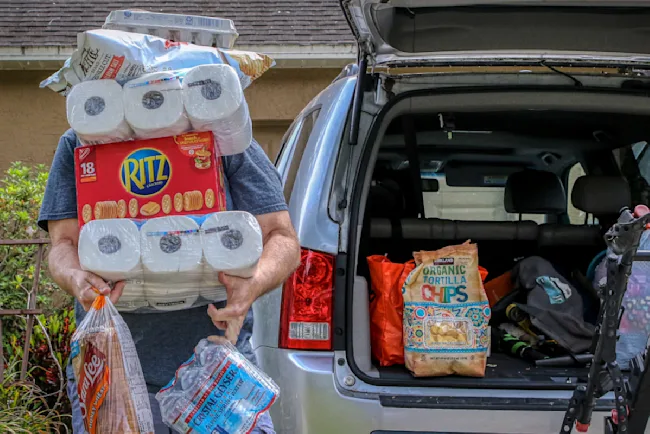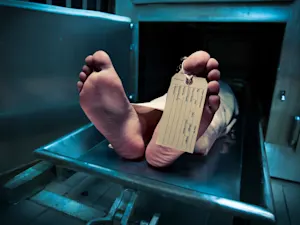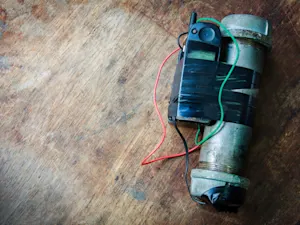
10 Reasons Why the Idaho Student Murders Don't Add Up
On a quiet November morning in 2022, residents of Moscow, Idaho, woke to the unthinkable. Four University of Idaho students — Kaylee Goncalves, Madison Mogen, Xana Kernodle, and Ethan Chapin — had been brutally murdered overnight in an off-campus rental home. What started as an ordinary weekend ended in a crime so shocking it gripped the nation. Let's take a closer look at 10 questions that continue to define this chilling crime — but first, here's a recap of what happened that fateful night.
The Night of the Murders
The details of the case are as haunting as they are puzzling. Five housemates lived in the three-story rental home on King Road, but only three were killed. The other two housemates survived unharmed, reportedly unaware of the gruesome murders unfolding in their own home. The fourth victim, Ethan Chapin, made the unfortunate choice to sleep over that night.
- Kaylee Goncalves, 21: One of the housemates. A fearless and driven young woman who had been best friends with Madison since childhood.
- Madison Mogen, 21: One of the housemates. A loyal and kind-hearted soul who shared an unbreakable bond with Kaylee.
- Xana Kernodle, 20: One of the housemates. Known for her playful spirit and loving nature, she was devoted to boyfriend Ethan.
- Ethan Chapin, 20: Xana's boyfriend, a fun-loving fraternity member with a knack for bringing joy to everyone around him.
Police believe the killer entered during the early hours of Nov. 13, 2022, targeting the victims while they slept. Despite the chaotic scene, the attacker left no immediately obvious trail, and the murder weapon, a fixed-blade knife, was never found.
Weeks passed with no arrests, leaving the small college town on edge. In late December 2022, authorities announced the arrest of Bryan Kohberger, a 28-year-old criminology Ph.D. student at nearby Washington State University. DNA evidence and surveillance footage of a white Hyundai Elantra allegedly linked him to the crime. Kohberger now faces trial, with prosecutors seeking the death penalty.
Though a suspect is in custody, the case remains full of mysteries. Let's take a close look at 10 perplexing questions sure to come up in the pending trial.
1. How did the killer move through the house undetected?
The King Road house wasn't a quiet, empty place. It was home to a handful of roommates, and on the night of the murders, all were present. Yet the attacker targeted four victims and left the two others unharmed. How did the killer navigate the three-story home, striking with precision while avoiding detection? Investigators believe the killer entered through a sliding glass door, but the silence that followed the attack raises questions about whether the killer had intimate knowledge of the house's layout or simply extraordinary luck.
2. Why were Kaylee and Madison found in the same bed?
Kaylee and Madison had separate bedrooms, but they were discovered together in Madison's room. This detail has sparked endless speculation. Did Kaylee, who had been planning to move out soon, sense danger and seek comfort with her lifelong best friend? Or did the killer intentionally target them as a pair? The discovery suggests something happened in those final moments that we may never fully understand.
3. Was the attack targeted, or was it random?
From the beginning, police described the murders as a "targeted attack," but they wavered on whether the target was a specific person, the house itself or something else entirely. If the killer had a specific motive, what was it? If not, what could drive someone to commit such a horrifying act against four people who seemed to have no enemies? The lack of clarity has fueled rampant theories, from personal vendettas to the chilling possibility of random violence.
4. How did the killer avoid leaving an obvious trail?
Despite the chaos of the crime, the killer left no immediate trail of evidence. The murder weapon was never recovered, and the scene initially yielded little for investigators to work with. It was only later that DNA on a knife sheath pointed to Bryan Kohberger, along with surveillance footage of a white Hyundai Elantra. But the question remains: How did the killer evade detection so thoroughly in those critical hours? The calculated nature of the attack suggests planning and precision that continue to puzzle investigators.
5. What role did the white Hyundai Elantra play?
The white Hyundai Elantra became a central clue in the case when surveillance footage placed it near the crime scene. Investigators tracked the vehicle to Kohberger, who allegedly drove cross-country to his parents' home in Pennsylvania. Was the car a deliberate choice meant to blend in, or was it a critical misstep that led to his identification? The Elantra connects Kohberger to the crime, but its exact role remains an unknown part of the case.
6. Why did the surviving roommates wait hours to call 911?
The surviving housemates called 911 around noon, reporting an "unconscious person." It later became clear they had discovered the bodies hours earlier. Why the delay? Trauma experts say shock and fear can cloud judgment, especially in high-stress situations. Did the roommates assume something less sinister had happened, or were they too terrified to act immediately? Are they hiding something? The delay adds another layer of mystery to an already baffling case.
7. What was the killer's connection to the victims?
Bryan Kohberger, a Ph.D. student in criminology, had no known personal ties to the victims. However, cellphone records suggest he had been near the house multiple times before the murders. Was he stalking the house or its occupants? If so, why? Without a clear link between Kohberger and the victims, the motive behind the crime remains one of the most unsettling questions.
8. Did social media play a role in the crime?
The victims, like many college students, shared glimpses of their lives on social media. Posts, location tags and photos offered snapshots of their final hours. Could the killer have used this information to track their movements or learn about their routines? The intersection of social media and crime has grown increasingly concerning, and this case highlights the potential dangers of sharing personal details online.
9. What drove such brutal violence?
The killer used a fixed-blade knife in a crime so violent that police described the injuries as "extensive." Some victims had defensive wounds, while others were likely attacked in their sleep. The sheer brutality of the act suggests rage, obsession, or a deep-seated intent. What could drive someone to commit such an act against four young people with seemingly no connection to the suspect? The answer could provide the key to understanding the killer's mindset.
10. What does Bryan Kohberger's background reveal?
As a criminology student, Kohberger studied criminal behavior and the justice system. If he is indeed guilty, could his education have influenced the crime, or did he exploit his knowledge to evade capture? The connection between his academic pursuits and the allegations against him raises unsettling questions. Was this crime an attempt to live out some dark fascination, or is Kohberger's background simply a coincidence? These questions loom large as the trial approaches.
What's next in the case?
Bryan Kohberger, arrested in December 2022, now faces four counts of first-degree murder and one count of burglary. Prosecutors plan to seek the death penalty, and a recent court decision upheld its constitutionality in this case despite challenges from the defense. Kohberger has pleaded not guilty, and his legal team continues to argue that no direct connection exists between him and the victims.
The trial, delayed multiple times, is now set to begin in August 2025 in Boise, Idaho.
As the families of Kaylee, Madison, Xana, and Ethan await justice, the questions surrounding this case remain as chilling as the crime itself. The trial may bring answers, but for now, the haunting mysteries leave us wondering what truly happened that night.
References: Idaho college student killings: A summary and timeline | Idaho college killings to remain a death penalty case























